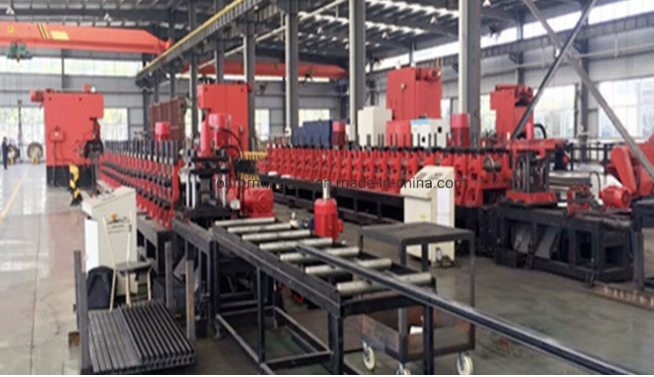
Posted on Monday, October 7, 2024
In Canada’s dynamic construction landscape, the choice of metal profiles for roofing and structural applications is critical. Roll forming, a process that shapes metal sheets into desired profiles through a series of rollers, has become increasingly popular due to its efficiency and versatility. This blog explores some of the most popular roll form profiles in Canada, focusing on their applications, benefits, and why they are favored in this unique market.
Description and Applications Standing seam profiles are characterized by their vertical seams that rise above the panel's flat surface. This design is often used for metal roofing, providing a sleek and modern appearance. Standing seam roofs are popular in residential, commercial, and industrial buildings across Canada.
Benefits The primary advantages of standing seam roofs include their exceptional weather resistance and aesthetic appeal. These profiles are designed to withstand the harsh Canadian climate, including heavy snowfall and rain. Their raised seams allow for efficient water drainage, preventing water pooling and subsequent damage. Additionally, standing seam roofs can accommodate thermal expansion and contraction, ensuring longevity and durability.
Description and Applications PBR (Panel Bearing Rib) panels are another prominent roll form profile in Canada. These panels feature a unique ribbed design that provides increased strength and support. Commonly used in commercial buildings, agricultural structures, and industrial facilities, PBR panels are well-suited for a variety of applications.
Advantages One of the key benefits of PBR panels is their ease of installation. The interlocking design allows for faster assembly, which is crucial for construction projects that require timely completion. Moreover, PBR panels are lightweight yet robust, making them an excellent choice for energy-efficient building designs. The ability to incorporate insulation within these panels enhances their energy efficiency, making them an attractive option for eco-conscious builders.
Overview and Applications B Deck profiles are primarily used in flooring and roofing systems, offering a versatile solution for both commercial and industrial buildings. The profile's distinctive shape provides excellent load-bearing capabilities, making it ideal for high-traffic areas and heavy equipment installations.
Popularity Factors The popularity of B Deck profiles in Canada can be attributed to their structural integrity and adaptability. As the trend towards prefabricated construction continues to grow, B Deck profiles are increasingly favored for their compatibility with modular designs. Their efficient manufacturing process also reduces material waste, aligning with sustainability goals in the construction industry.
While standing seam, PBR, and B Deck profiles dominate the Canadian market, other roll form profiles are also gaining traction. Corrugated panels, for instance, are appreciated for their strength and aesthetic versatility, often used in agricultural buildings and residential applications. Custom profiles are also becoming more prevalent, allowing builders to meet specific architectural needs and design preferences.
Choosing the right roll form profiles is essential for ensuring durability, efficiency, and aesthetic value in Canadian construction projects. Standing seam, PBR, and B Deck profiles stand out for their unique benefits and suitability for the diverse climate and building requirements across the country. As the construction landscape continues to evolve, the demand for high-quality, customizable roll form profiles will likely grow, encouraging manufacturers and builders to explore innovative solutions.

Understanding Coil IDs, Mandrel Sizing, and Shear Pin Safety in Uncoilers
Posted on Wednesday, October 1, 2025
Mismatched sizes can lead to machine damage, downtime, and safety hazards — often evidenced by a shear pin failure.

How Coil Tensile Strength Affects Roll Forming and How to Adjust Your Machine
Posted on Wednesday, October 1, 2025
Changes in tensile strength can significantly affect the finished profile, causing misaligned bends, uneven edges, and out-of-spec parts.

Why Paint Cracks on an Embossing Line Running Pre-Painted Coil and How to Prevent It
Posted on Wednesday, October 1, 2025
This issue not only affects the visual quality of the product but can also lead to increased scrap rates and customer complaints.

The Most Popular Standing Seam Metal Roof Panels in the U.S. — A Comprehensive Guide
Posted on Monday, September 29, 2025
In this post, we’ll explore what panel styles and sizes are most popular in the U.S